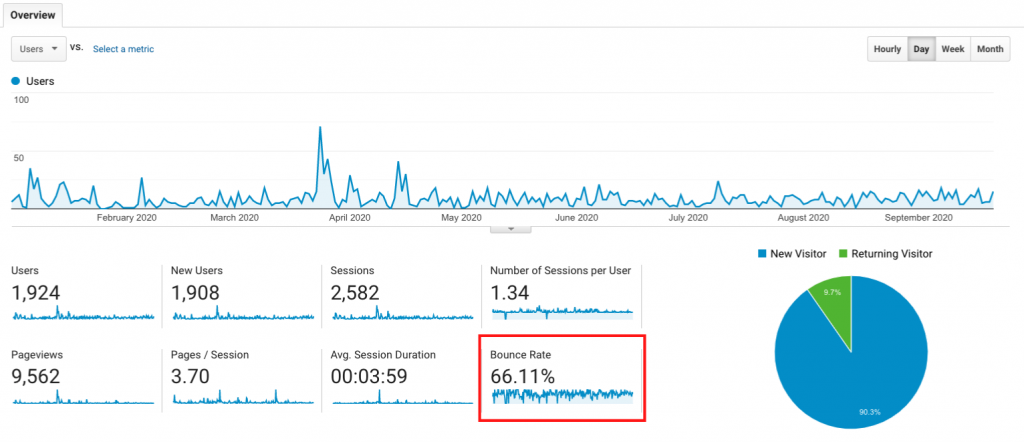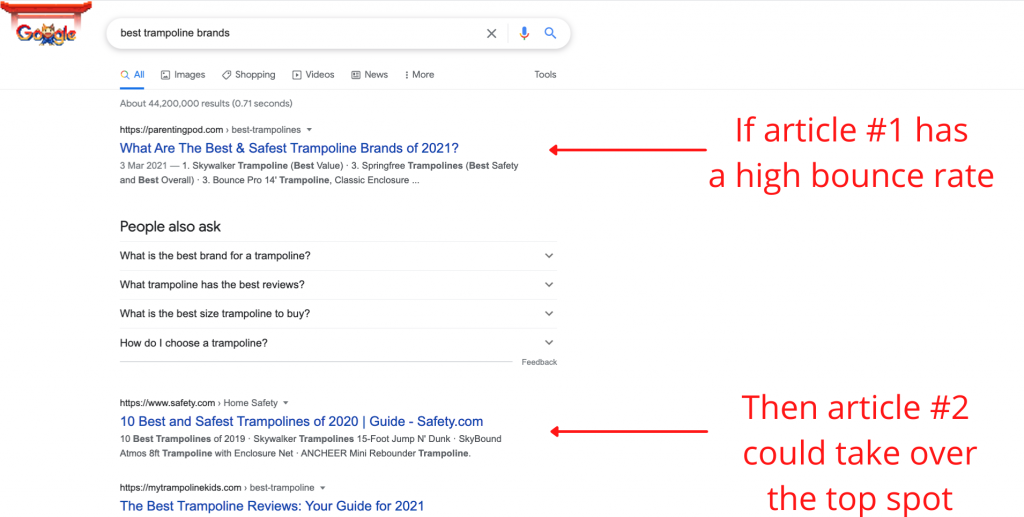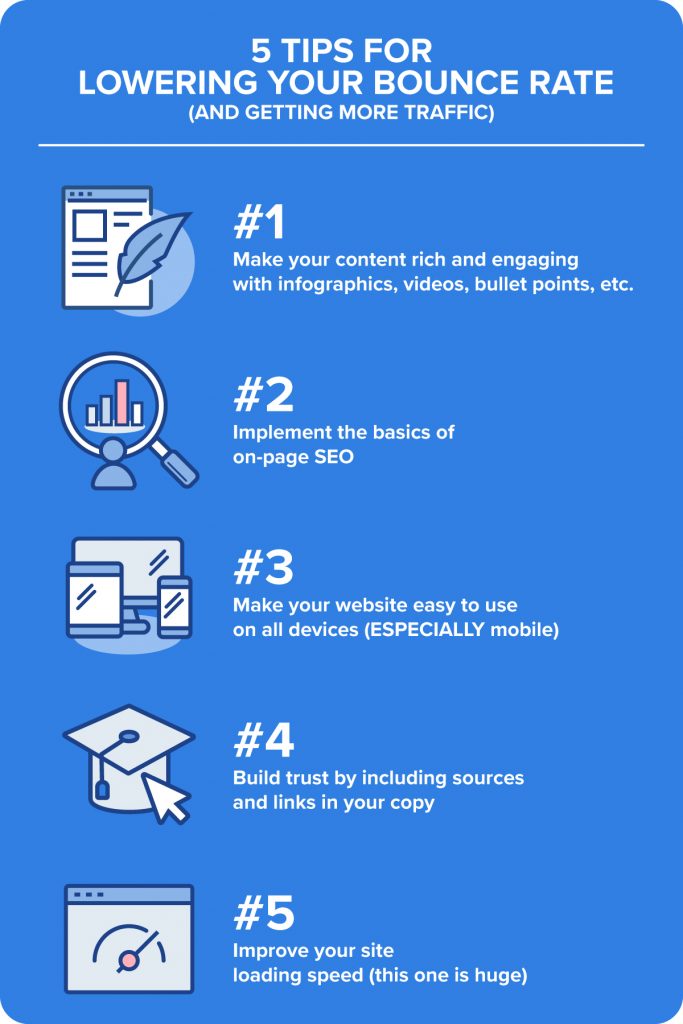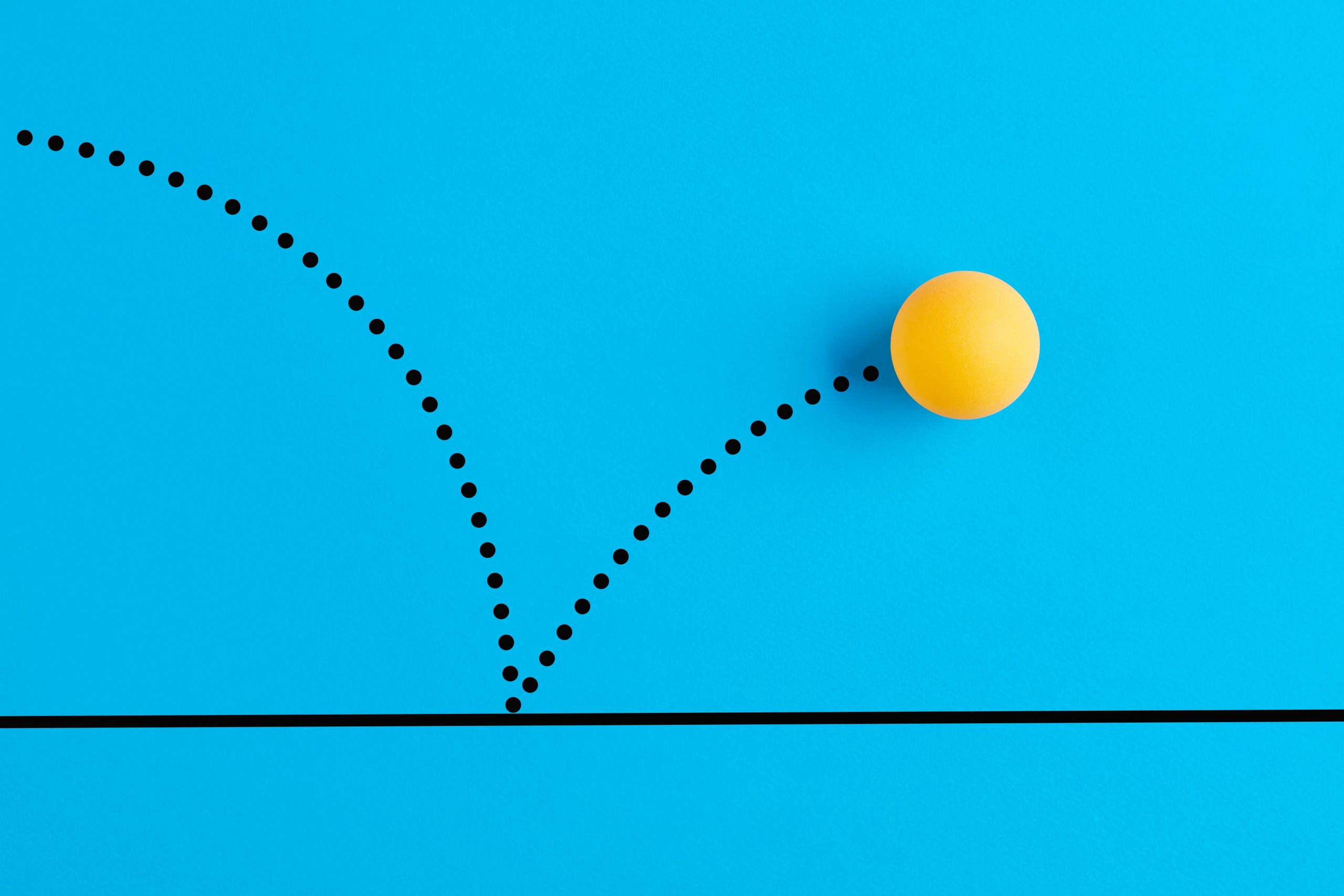If you are a marketer, then you know that your website’s bounce rate is one of the most crucial factors when it comes to your SEO. Unfortunately, many marketers are overlooking this factor, and as a result, their website’s bounce rate is high, which can hurt their SEO ranking.
In this blog post, we will discuss what bounce rate is, why it matters for SEO, and how to decrease your website’s bounce rate. We will also discuss the difference between bounce rate and exit rate. Let’s get started!
If someone asks you what your ‘bounce rate is, there are two common ways to answer this question…
Way #1 – Tell them the number of times that you can jump up and down on a trampoline in under 60 seconds.

Bouncin’
Way #2 – Tell them that bounce rate is the percentage of people that visit a single page on your website and do nothing on the page before leaving.
Today, we are here to discuss the 2nd type of bounce rate (sorry, trampoline lovers).
But! While the term ‘bounce rate’ might sound like a small thing, it is an EXTREMELY underrated part of your website’s SEO.
Table of Contents
Why is Bounce Rate so Important?
Bounce rate (BR) is important because your bounce rate is an indication of the engagement of your website. It is directly linked to how your users interact with your brand.
So, because of that, if you know how to examine your BRs, you will be able to quickly identify what types of content resonate with your audience. It will also indicate what pages on your website need a serious face-lift.
Both of which will result in better traffic, and increased conversions.
Let’s dive into bounce rate a bit deeper (and give you 5 tips to improve YOUR BR)…
Wait… how is my bounce rate calculated?
It is calculated by dividing the number of visitors that exit your website ( for a single landing page we would term this the page’s bounce rate) without triggering any action (single page sessions) by the number of visitors that land on your website (total session).

Bounce rate math be like…
But don’t worry – one can easily find their BR in Google Analytics. To find the Google Analytics bounce rate:
Go to Audience -> Overview, and vualá! Your BR awaits you. It is one of the most common Google Analytics metrics, and know you know where it is.

But, there are two things to note…
The thing to note #1 – This is the most basic way to find a BR, but if you really want to identify core issues in your website’s UX, you gotta make a more detailed Bounce Rate report (more on this later).
The thing to note #2 – Many factors collectively can inhibit or fire Google analytics’ code, such as ad blockers, slow-loading page, session timeouts, and improper tracking setup. This means that your bounce rate will never be perfect, but it will be a pretty good indication of your website’s engagement.
Why does bounce rate matter?
It’s simple – the higher the BR, the worse your engagement. And bad engagement is something that Google tracks, which leads to negative SEO consequences (mainly worse rankings).
This is because Google wants to serve its users the best content possible, and poor engagement can be seen as a signal of poor content.
For example, let’s say for the keyword ‘best trampoline brands’…

The page’s bounce rate for the article in the #1 position has a BR of 78%, and the page’s bounce rate for article #2 has a 50% BR. This communicates to Google that article #2 might better serve the user experience for the query. As such, it has given this particular page #2
This means that article #2 has a great shot of overtaking article #1 in search rankings or search engine results.
What’s the difference between bounce rate, exit rate, and dwell time?
All these metrics are essential to make a successful website that grabs users’ attention and leads them to interact with your website. However, they are often misused. There is a lot of confusion, especially between bounce rate and exit rate.
Below is the difference between BR, exit rate, and dwell time:
#1 – Bounce Rate
As mentioned, BR is the percentage of people that visit a single page on your website and do nothing on the page before leaving (aka – bouncing).
#2 – Exit rate
Exit rate can show you where visitors who have viewed more than one page are eventually leaving from. This is commonly called the ‘exit page.’
#3 – Dwell time
Dwell time refers to the length of time a person spends looking at a web page after clicking a link on a SERP page before going back to the SERP results.
The value of this metric to a search engine is obvious – the more time you spend consuming the content of a page you clicked to visit, the higher the probability that the page satisfied your needs. It also means that the content you consumed matches your search intent.
If you log into your Google Analytics account, you will find bounce rate, exit rate, and dwell time there.
What is a healthy bounce rate?
Well, this is actually tougher than it sounds.
You hear many ‘SEO experts’ say that a BR between 40% to 60% percent is considered average. And anything below 40% is excellent!
These numbers aren’t necessarily accurate…

‘SEO experts’ be like…
However, while these can act as a ‘good rule of thumb,’ there is no significant evidence behind these ratings.
Truth be told, there is no universal ‘good’ BR, as it completely depends on your industry, the search queries, seasonality, and many other factors.
So when it comes to your own BRs, your goal should be to compare them historically and look for ways to improve (listed below).
What are the reasons for a bad bounce rate?
While there are no universal ‘good’ BRs, it should be noted that higher BRs are bad, and average bounce rates above 90% could mean your website needs a LOT of work.
Also, it should be noted that a bounce rate below 20% is suspicious. If you are getting a bounce rate that is suspiciously low, you should check your analytics setup.
Ensure there are no tracking mistakes. Common bounce rate performance problems include duplicate tracking code, heavy websites, incorrect setup interaction events, and not firing the virtual page views.
How can I improve my bounce rate?
Bad BRs aren’t a problem in themselves – they indicate deeper problems on your website.
Mainly poor user experience and subpar focus on SEO.
Instead of focusing on BRs, focus on improving the overall user experience, as well as implementing on-page SEO. Working on both will dramatically help with your average bounce rates (and exit rates too).
Below are five tips you can take to improve your SEO, engagement, and user experience. In these tips will improve site quality, increase organic traffic, improve your Google rankings, and make sure a user spends more time on your site:

#1 – Make your content rich, helpful, and engaging.
This means adding infographics, videos, bullet points, etc. This is an essential ranking factor, and if you align with the users’ search intent – your one-page visits will drop. Remember, the more engaging your content, the longer people will stay on your site, and the lower your bounce rate.
#2 – Implement the basics of on-page SEO.
Having a strong on-page SEO strategy is essential for any website. By implementing basic on-page SEO tactics, like including relevant keywords, having a good meta description on each page, optimizing page titles and headers, and making sure your website loads quickly, you can significantly improve the user experience on your website.
This can translate to lower bounce and exit rates, as well as higher search engine rankings. Don’t underestimate the importance of on-page SEO – it’s one of the foundational elements of a successful online presence. So do yourself a favor and make sure you’re mastering the basics. Trust me, it’ll pay off in the long run.
#3 – Make your website easy to use on all digital devices (ESPECIALLY mobile).
Mobile technology continues to take over our daily lives. So, it’s important to make sure that your website can be easily accessed and navigated on all devices. This improves the user experience and will also have a significant impact on your bounce and exit rates.
After all, no one wants to struggle to navigate a clunky or non-responsive website on their phone or tablet. Investing time and effort into mobile optimization not only increases the chances that users time on page, but it also shows them that you value their experience. Don’t let outdated technology drag down your online presence – make your website mobile-friendly today. Doing so will significantly increase your chances of having a low bounce rate.
#4 – Build trust and increase the number of visitors that browse through your website by including sources and links in your copy.
In this time of fake news and clickbait, it is essential to establish trust with your audience by providing sources and links in your website copy.
Not only does this enhance the user experience, but it can also improve time on page. Furthermore, it will decrease the bounce rate and decrease exit rate. By showing that you are a credible source, visitors are more likely to spend time on your website. They will explore other pages rather than quickly bouncing off or exiting. Adding sources and links increase trust, and also drive traffic to other pages on your website. It’s a win-win for both you and the visitor. Make sure to include those sources and links for maximum success.
#5 – Improve your site loading speed (this one is huge).
The speed at which your website loads can make or break your success on the internet. Not only does on-page SEO heavily factor in loading speed. It also plays a vital role in reducing bounce and exit rates on your site.
A slow-loading site can lead to frustrated users who quickly leave. This will lead to a higher bounce rate and indicate a poor user experience.
On the other hand, faster-loading sites have lower bounce rates and stronger user satisfaction. Don’t wait any longer – take steps now to improve your site’s loading speed! Improve your bounce rate, and exit today. Make sure you reap the benefits of increased traffic and conversions too. Trust me, you won’t regret it. #speedmatters
Conclusion
Bounce rate doesn’t have to be scary or overly complicated. By simply focusing on your user experience and SEO, you will naturally improve your bounce rate, which will naturally help your organic rankings. If you are interested in improving your bounce rates and generating INSANE amounts of traffic with SEO, reach out to a digital strategist today. Also, feel free to check out our premium content services too! Our premium content services are great at lowering your BR and engaging your potential customers.
Which one of our 5 tips will you implement today?
FAQs on bounce rate
Is 35% a good bounce rate?
Averages range from 50 to 45%. A reasonable rate would be between 25% and 50%. Check Google Analytics settings and filter settings to ensure you monitor visits if your bounce rate falls below 20 to 30%.
Does a high bounce rate affect SEO?
SEO, or search engine optimization, is a crucial aspect of digital marketing. A high bounce rate can negatively impact SEO because it signals to search engines that the website is not providing valuable content for viewers. Additionally, a high bounce rate may suggest that the website lacks straightforward navigation and a cohesive design, both of which are important factors for SEO success. On the other hand, a low bounce rate suggests that visitors are finding what they’re looking for on the website and engaging with its content. Therefore, SEO experts should pay close attention to their website’s bounce rate and work to improve it to ensure successful SEO performance.
Do the Google ranking algorithms take into account bounce rates?
Organic ranking is not directly impacted by a good bounce rate. A poor bounce rate, however, has an indirect impact on other ranking variables that Google is concerned about, such as slow page performance, bad design, inadequate mobile optimization, etc.









